The Great Konkan Run – Day
18: Beypore, Kappad Beach, Guruvayur, Palayoor, Edappally
-----------------------------------------------------------------------
You are again moving south, bypassing Kozhikode on NH 66. Oh yes, we got our own Route 66 too. One day, you plan to drive on it to Kanyakumari. Today, the plan is to reach the Guruvayoor Temple.
---------------------------------------------------------------------
-----------------------------------------------------------------------------
The complex also has the Indian Christians Historical Museum (closed today) which contains stones from the foundation of the church built by St Thomas and some articles used by him during his stay here. There is a pond here called Thaliakalam where St. Thomas baptized people. Looking at the map, the lake appears to be a minute walk on the north-east side.
----------------------------------------------------------------------------------
It is time to hit the pedal to the metal. Time to get to the place you always wanted to – Kochi, place where tomorrow you will see those Chinese fishing nets!
You still cannot believe
how you managed to see so much yesterday in Kannur. It was truly epic. But then
no two days are same. You are in Beypore, south of Kozhikode, on the banks of
the Chaliyar river. Beypore reportedly makes the same kind of timber boats,
locally called Uru, that you saw in Veraval and Mandvi in Gujarat. The shipbuilders have been making these handcrafted Malabar Teak boats probably since the Mesopotamia times
with no designs or blueprints; knowledge being handed down through the generations. But
after an hour of just going around the country roads there is no sign of the boats. Nobody seems to have ever heard of them or seen them. Unless they want to keep them a secret from pesky tourists.
 |
| Kappad Beach in Kozhikode where Vasco da Gama landed in 1498 |
 |
| Trekker, the utility vehicle from Hindustan Motors |
-----------------------------------------------------------------------
The Inscrutable
Kerala Folks!
 |
| A row of still surviving traditional houses in Kozhikode |
In Kerala, the folks are definitely nice but there is this real
communication problem in the state. And unless you know Malayalam, there is no way to make yourself understood. And this is surprising since Keralaites are the most educated and
you would think they would know some English and also the fact that most of Kerala is urban.
Nope, nada, zilch. Again, Keralaites are the most mobile of
people, with most of them working overseas and across the country, so they should know some smattering
of Hindi. Sorry, wrong assumption again. Nope, nada, zilch. No luck there either.
-----------------------------------------------------------------------
 |
| Vasco da Gama probably came in that boat |
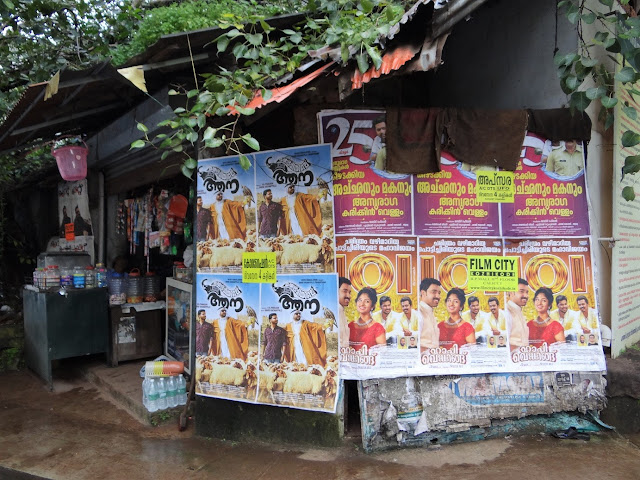 |
| Malayali movie industry seem to be alive and kicking |
 |
| Hit & Flop |
 |
| Is Mofussil an adjective or noun here? |
 |
| Kozhikode: Tali Shiv Temple - you did not go inside here |
 |
| Tali Shiv Temple in Kozhikode |
Before going to Beypore,
you are going around Kozhikode to look at some spots. Historically called
Calicut, the city ruled by Zamorins, was the hub of spice trade. You are in
Thekkepuram, a culturally rich place with centuries old settlements and the
Kuttichira (chira means pond). Kozhikode has three main mosques, out of which
the Miskal Palli is the grandest. Just like the temples and the churches, the
mosque too is built in the traditional architectural style and Vasthuvidhya.
The mosque is a tall, 4-tiered structure erected over 24 wooden pillars; each
level is sloping and topped with the terracotta tiles. Except the ground floor
all the upper floors look built out of wood. In Kerala, at the first glance, it
is difficult to say if it is a temple, church, mosque or in this case a pagoda!
Did Ibn Battuta visit this
mosque when he was in Calicut waiting to board a ship to China and on his way back from China on his way to Mecca (1342-47)
The Miskal Palli Mosque was
built by a renowned Yemeni trader and shipowner Nakhuda Mishkal, who lived here
in the 14th Century (circa 1340s). In 1510, the mosque was partly
burnt down by the Portuguese folks. The Zamorin gave wood to restore the
mosque. Today, the mosque is closed and you cannot see the mimbar which has an
inscription detailing its history.
The sign says that the
mosque is popular with students and scholars who come here to study the
architecture and history. As if on cue, a group of students appear. Outside,
the 400 years old Kuttichira tank has been taken over by kids swimming on a
Sunday morning.
 |
| Route 66 |
 |
| Love these roads with the sea on the side |
 |
| Guaranteed to bring a smell in any language |
 |
| This torn poster is the closest you came to Urus in Beypore |
You are sure, you will be
able to find Kappad Beach, some 20 kms north of Kozhikode. If Vasco da Gama
could make it here from Portugal, the Beypore fiasco notwithstanding, you
should be able to find your way overland. Now you are wondering why Vasco gets
so much interest and written about and gets a city and railway station named after him. Sea farers and traders have been coming to Malabar and
Coromandel on their boats like 1500 years before Vasco did. The
traders came riding the monsoon winds, bought black pepper and muslin, paid in
gold, met their girlfriends and went away. You are now wondering if the Romans came around the Cape of
Good Hope or they would break their journey into two - first sailing over Mediterranean Sea, then overland to the ports in Egypt and finally sailing through Red Sea and Arabian Sea to Muziris.
But Vasco changed this narrative. His arrival would unleash the repressive colonialism that would reduce the richest country to a poor, malnourished
country down on its knees in a matter of few centuries. The last
belligerent European was Alexander and he came by land. Until now, the invaders
had come from the north, settled down and called India their home and largely kept away from the
coastal areas. The landing of Vasco would change the political landscape as
European factories and forts will ring the country from Gujarat to Bengal
slowly leaching away all the wealth to Europe.
Vasco would be proud. You
are at the Kappad Beach taking in the golden sands. Yes, he did choose quite a
picturesque spot to land on. A notice indicates that post tsunami work has been
carried out on the beach that includes making this tiled stretch of waterfront.
You are not a big fan of construction on beaches and rivers. Waves come in,
breeze picks up, the sand is cool and Kerala continues to delight.
 |
| Picture Post Card Perfect Kadalundi River - View from Thayyilakadavu Bridge |
You are again moving south, bypassing Kozhikode on NH 66. Oh yes, we got our own Route 66 too. One day, you plan to drive on it to Kanyakumari. Today, the plan is to reach the Guruvayoor Temple.
But first, you will stop by
at this mithai shop that sells the famous Kozhikoden Halwa. This is like a
candy shop with these colourful candies lining up the shelves. Ok, it is a
candy shop for giants. The candies are huge blocks of translucent, nut encrusted
blobs that seem to move slightly when touched. You are sure they turn into Gremlins
at night and raid the town.
The Halwa became so famous
that the Britishers named the city street selling the Halwa as SM (Sweet Meat)
Street. You try a little piece of the brightly coloured mithai with ghee oozing
out of it, though it is probably coconut oil too. The texture is rubbery and
the taste is very sweet. The halwa made of fermented wheat was probably
conjured up by Gujarati cooks working for the Calicut rulers, the Zamorins. The
halwa then was taken aboard the wooden dhows, Urus, across the seas where the
delicacy wowed the Arab world.
 |
| So there is a Halwa Bazar too in Kozhikode |
Now that you are looking at
the sign on the shop and wondering what is Laksh Deep Halwa all about. You will
go check it out soon!
Hindustan Motors
Trekker – Blast from the Past
Long ago you
were trying to sell these in Jabalpur Belt of MP which was a stronghold of
Mahindra’s Major or one of those ‘jeeps’ with no name really. The roads were
horrendous and the jeeps would carry about 30 people. Some people would sit on
the reinforced roof and some would balance themselves on the hood. It was
always a fun game to guess who the driver was. There was a passenger on the
driver’s seat while the driver, mostly skinny, would still manage to drive the
vehicle. His body would be hanging out even as his hands and feet invisibly drove the vehicle through the tangle of limbs. It was an uphill battle to make anyone buy our Trekker.
Personally, you liked the Trekker. It had no-nonsense bareknuckle design.
Ok it had no design; just some panels hammered together. Ambassador’s 1.5 Litre
Diesel engine powered it. While the jeep was skinny, Trekker was WIIIDE. The
seats could take enough passengers and the driver could still reclaim his seat.
Also, while the jeep bounced even when full, the Trekker’s drive was much
smoother and the chassis would not crack; a chronic problem with the Mahindra jeeps.
It is a real surprise to see this bunch of pimped-up Trekkers; some
with even metallic paint. Just like the Maruti 800 cabs of Shillong, the owners
here love their Trekkers and have them dressed and embellished to kill.
Yesterday you saw the iconic Ambassadors in Payyanur and today these Trekkers.
So, while the company is no more, some pockets in the country still love their Hindustan
Motors vehicles; a company that introduced mobility in the country. In a
landscape with the latest cars and technology, the anachronistic Ambassadors
and Trekkers hark back to more innocent times; when the nice people valued
their possessions, and made memories.
Guruvayoor Temple sits in a
huge complex. There are big queues to have darshan of the deity Guruvayurappan,
the four armed Vishnu today. It is said that as Dwarka lay submerging into the sea, Krishna asked Vayu
and Guru Brahaspati to bring the idol here; and hence the name Guruvayur.
The temple went through the
usual travails – was burnt by the Dutch, tribute was paid to Hyder Ali, the
idol was hidden when Tipu Sultan came around; yes he did set the temple alight.
Since then the temple went through several renovations. In 1970, another fire
razed through the temple. Wood temples have this propensity to catch fire
especially during festivals when thousands of diyas are lit. Not surprisingly,
this epidsode happened during Ekadasi lighting. You did think about this
eventuality when you saw the niches on the walls of Sri Rajareshwara Temple in
Kannur.
You are not known to be the
most patient man especially when it comes to standing in queues. You have still
not been able to figure out which way the queues are heading to. Whatever
little motivation you had has evaporated in Kerala owing to the strict dress
code in the temples here. You walk the streets of the temple town before
heading south.
--------------------------------------------------------------------
Independence Day Eve
The year before you were in Udupi on Independence Day. This year you will be celebrating Independence Day in Fort Kochi. And if you can recall, the next year you were in an equally beautiful place in the mountains, Mukteswar in Uttarakhand.
------------------------------------------------------------------------
--------------------------------------------------------------------
Independence Day Eve
The year before you were in Udupi on Independence Day. This year you will be celebrating Independence Day in Fort Kochi. And if you can recall, the next year you were in an equally beautiful place in the mountains, Mukteswar in Uttarakhand.
------------------------------------------------------------------------
St. Thomas Syro Malabar
Catholic Church in Palayoor is the oldest church in India built by St. Thomas,
one of the apostles of Jesus Christ, who arrived in Kodangallur in 52 AD, and
established the St. George Orthodox Syrian Church.
 |
| India's Oldest Church in Palayur |
You reach the church in the
evening as a full moon rises over the church. People are leaving after
the Sunday Mass. In all the excitement of seeing a Velha Goa like Cathedral,
you miss seeing the remains of the original shrine and the cross that was
raised by St Thomas here.
 |
| Palayur Church - the old wooden Church that has remains of the original church |
Now as you flick through
the photos, the church is made of two parts. The front except the façade is
probably the old part; it is a traditional wooden building with a sloping roof
and terracotta tiles while the rear one is recently built. So, like you always
do, you move around the perimeter of the complex clicking and then finally
enter the new part of the Church not realising you have missed seeing the
interiors of the front wooden one. Of course, the Church has seen several
constructions over the centuries since it was burnt to the ground by Tipu
Sultan.
 |
| Palayur Church - stone sculptures depicting scenes from the life of St. Thomas |
One intriguing feature is
the tall steel flag mast that almost looks like the dhwajhstambh of a temple. Now
that you recall, there is a deepstambh too at the gate of the complex. A huge
square bell tower rises. Ropes lie on the floor that are pulled to sound the
bells to call the believers. In the back, there is a cemetery with inscribed
flat marble gravestones. Was there a temple and a synagogue here at this spot?
It is quite likely.
 |
| Boatkulam in Palayoor - depicts St Thomas coming here to teach gospel |
 |
| St. Thomas statue in Boatkulam - he doesn't look too pleased though coming to Palayur |
Opposite the Church, there
is Boatkulam / Buttakulam or the Boat Jetty. St. Thomas’s statue stands here
along with replica of a boat with him in the boat. In 52AD, St. Thomas arrived
in Palayur from Kondangallur or Muziris. He came to preach Christianity to the
locals and Jew merchants.
At that time Palayur was
one of the strongest Brahmin centres in Kerala, with a large community of
prosperous Brahmins living here since ancient times. Palayoor, also had ancient
presence of Malabari Jews. It is said St Thomas came to Judankunnu, Hill of
Jews, to preach Gospel to the Jew Merchants. It is believed Jews first landed
in India here before moving to Muziris. Over time, the water dried, turning the
backwaters of Palayoor into this dryland. Boatkulam depicts the Saint’s coming
to Payanur.
The complex also has the Indian Christians Historical Museum (closed today) which contains stones from the foundation of the church built by St Thomas and some articles used by him during his stay here. There is a pond here called Thaliakalam where St. Thomas baptized people. Looking at the map, the lake appears to be a minute walk on the north-east side.
----------------------------------------------------------------------------------
Kerala
Architecture
In Kerala, at first glance
it is difficult to figure out if it is a temple, mosque, church, synagogue or
in this case, a pagoda. From what you can ascertain, the worship places in the beginning
were probably all built by the same set of ‘Thachhans – Skilled Craftsmen’
employing same principles of traditional architecture and Vasthuvidhya. Also,
the structures were initially all built of wood. The sign at the Miskal Palli
mosque confirms that Vaastu was followed in its construction. Though it was
partly destroyed by the Portuguese, it has managed to retain its original
flavour of multi-tiered wooden storeys.
While construction followed
a common thread, so did the destruction. While elsewhere in India, the destruction
was largely unidimensional, here in Kerala there was literally a hustle among
the Portuguese, Dutch & British who will take turns to destroy and burn
down temples, mosques and churches. Ok, the synagogues too got the European
treatment. There were supposed to be six synagogues in this general area, now
only two survive – in Fort Kochi and Ernakulam. The Paradesi Synagogue was
destroyed by the Portuguese but was reconstructed two years later when Dutch
came. Strange are the ways of the Europeans. With successive reconstruction,
the structures took shape in stone and plaster. Later, Tipu Sultan will keep up
the tradition of demolishing temples and churches. The soaring gopurams of Sri
Rajarajeshwara Temple in Kannur were brought down though the temple survived by
some divine miracle.
--------------------------------------------------------------------------------- |
| Middle East landscape in Kerala |
It is time to hit the pedal to the metal. Time to get to the place you always wanted to – Kochi, place where tomorrow you will see those Chinese fishing nets!
In Edappally, few kms
before you cross the bridge into Kochi, you see this grand Church complex on
the right. It is lit up and as you walk inside, you realise that you have the
whole sprawling campus to yourself. It is apparent that some old church has
undergone several renovations to create this big marble shrine.
St. George’s Syro Malabar
Forane Church, was first built in 593AD. St. George, the apostle, had built
seven churches; the oldest one you had just seen in Palayoor. This church came
up after these oldest seven churches. The second church here was built in 1080.
The current building was completed in 2015. The older church buildings have
been retained.
 |
| St. George’s Syro Malabar Forane Church in Edappally |
 |
| St. George's Forane Church in Edappally |
You climb the ramp to the
main building with two bell towers flanking the portico. Immense marble floors,
tall pillars, cusped arches makes this a modern wonder. Though it does seem a little 5-Starish! You spend some time
here in the tranquility of the night under the moon that has just emerged out
to the clouds.
It is midnight when you
reach Fort Kochi.
The journey continues.
Day's Progress
Route Taken: Kozhikode to Beypore, then north to Kappad Beach, south again to Guruvayur, then to Palayur, to Edappally and night stay in Fort Kochi
References
Architecture of Kerala
Uru Boat Building
Kuttichira / Mishkal Mosque
Kozhikode Halwa
Guruvayur
Palayur
Detailed and informative
One Awesome Blog
Jews of Palayur – a detailed and well researched blog
with references and interviews
Blog Related Facebook Page – Jews of Malabar
Indian Christian Historical Museum, Palayur
The Legends of St. Thomas in Kerala by SUSAN VISVANATHAN, India International Centre Quarterly, Vol. 22, No. 2/3 (SUMMER-MONSOON 1995), pp. 27-44 – available on jstor
- https://www.jstor.org/stable/23003931?seq=1
Brown, L. W., The
Indian Christians of St. Thomas – an Account of the Ancient Syrian Church of
Malabar, Cambridge, 1956, p.54, 62-63.)
The Indian Christians of
St. Thomas, otherwise called The Syrian Christians of Malabar, by The Rev. W.
J. Richards (1908) - https://archive.org/details/indianchristian00richgoog/page/n12/mode/2up
The
Rough Guide to Kerala
The Great Konkan Run
Day 16 - Kasaragod
Day 17 - Kannur
Day 18 - Kozhikode
Day 19 - Kochi
Day 20 - Part I - Spice Wonderland
Day 20 - Part II - Kodungallur
Day 21 - Thrissur
Day 17 - Kannur
Day 18 - Kozhikode
Day 19 - Kochi
Day 20 - Part I - Spice Wonderland
Day 20 - Part II - Kodungallur
Day 21 - Thrissur
If you liked the blogpost then
Please follow Justrippingg on Instagram
















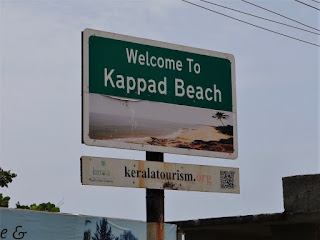

















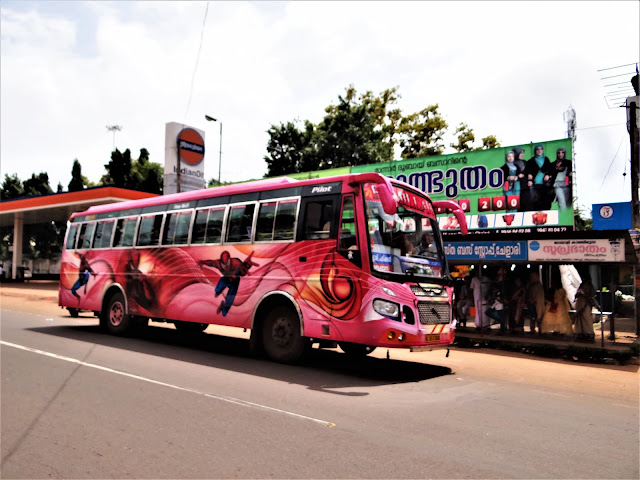




















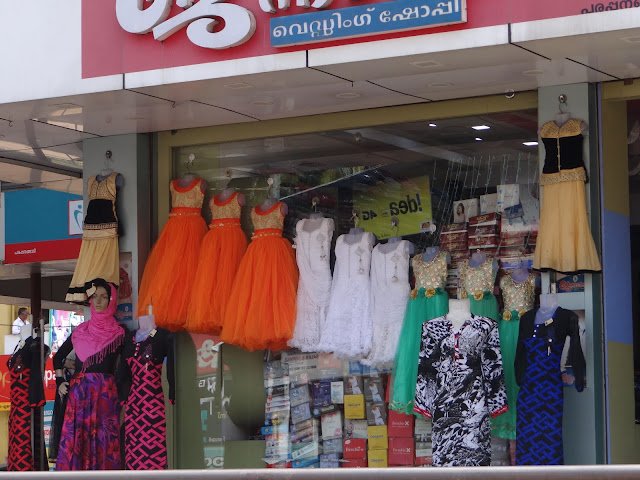






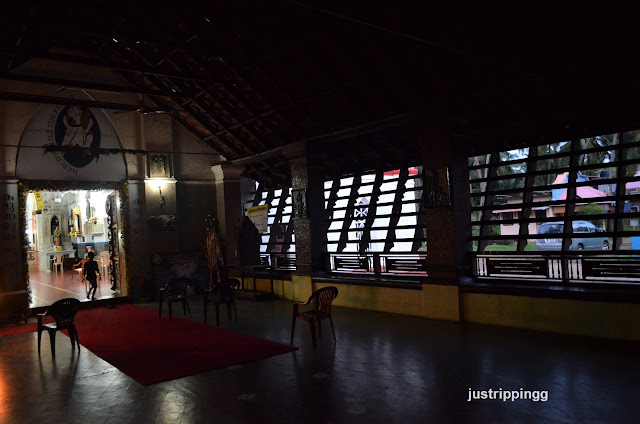














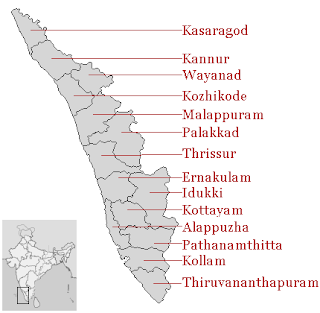
No comments:
Post a Comment